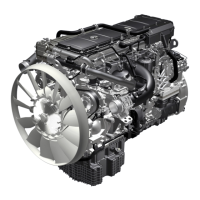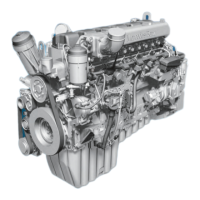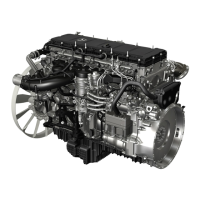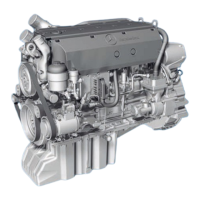Engine cooling
36
Cooling and lubrication
Introduction of New Generation of 4-Cylinder Inline Engines, OM 651
q
Engine lubrication and cooling circuit
The coolant pump pumps coolant through two sepa-
rate ducts. The lower duct supplies the crankcase and
the oil-water heat exchanger
with coolant and the
upper duct supplies the cylinder head with coolant.
The EGR path runs parallel to the upper duct. The
following components of the EGR path are supplied
with coolant:
•EGR valve
• EGR bypass housing
• EGR pre-cooler and EGR cooler
Thermal management
The coolant pump is switched off when the engine is
cold-started so that the combustion chamber can heat
up more rapidly.
The coolant pump is switched off
during a cold start
for max. 500 s if the following conditions are fulfilled:
• The limit values stored in the control unit for
intake
air and coolant temperature and for the total fuel
injection quantity have not yet been reached.
• The engine speed or injection quantity has not
exceeded the specified limit value.
• "Heat" has not been requested by the automatic
air
conditioning control and operating unit.
The position of the coolant thermostat is used to
preci
sely adjust the quantity of coolant flowing to the
radiator or direct to the coolant pump. This regulates
the temperature of the coolant in the coolant circuit.
The coolant thermostat is controlled via the integrated
heating element. The
coolant pump and the heating
element are controlled via the CDI control unit.
When the coolant thermostat is clos
ed, the coolant
flows back to the coolant pump and is fed back into
the circuit.
Once the engine has reached operating temperature,
the co
olant thermostat is opened and the coolant
circuit becomes active. The radiator is then incorpo-
rated into the coolant circuit.
A filling line between the coolant expansion reservoir
and the
radiator balances out the coolant level.
A vent line ventilates the coolant system between the
coolant expansion reservoir
and the housing of the
coolant thermostat.
i Note
The heating element of the coolant thermostat
may not be removed / disassembled from the ther-
mostat housing. The predetermined opening point
shifts if the housing is damaged or if fluid enters
the housing.
More detailed information on this can be found in
the Workshop Information System (WIS).
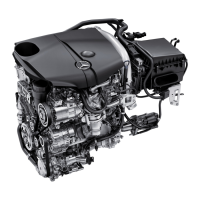
